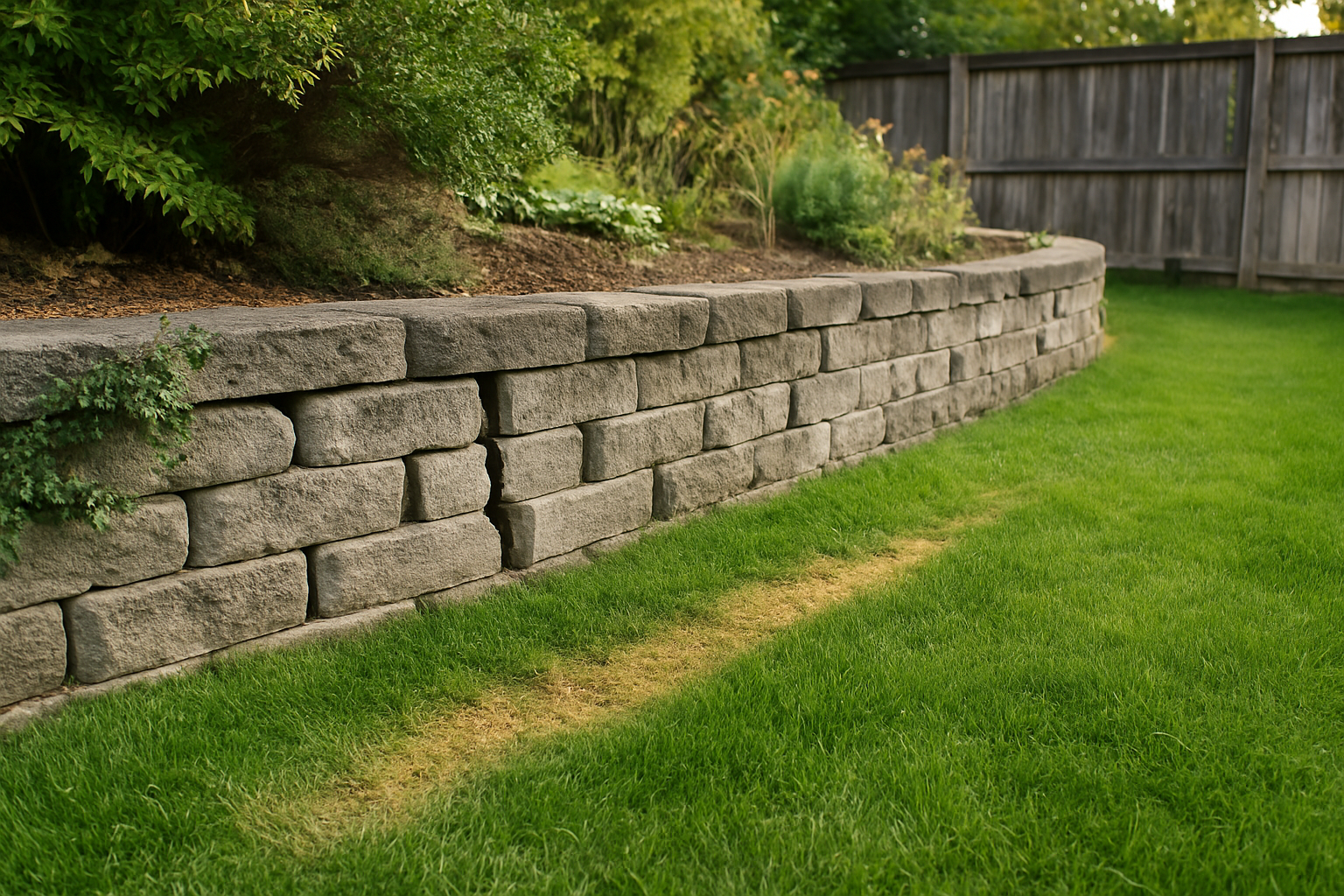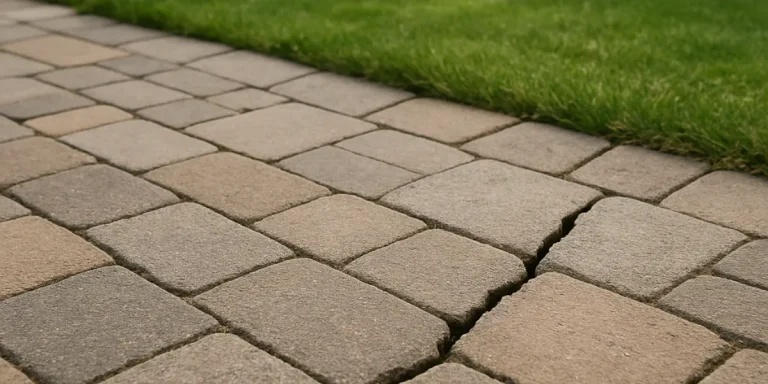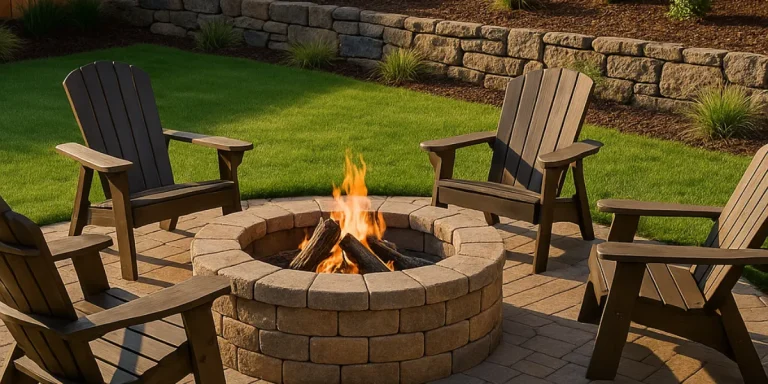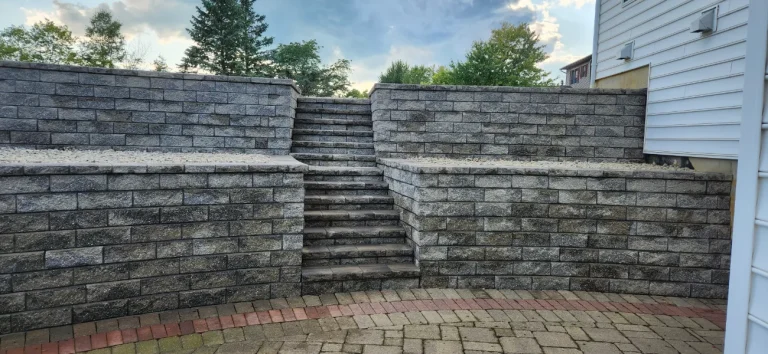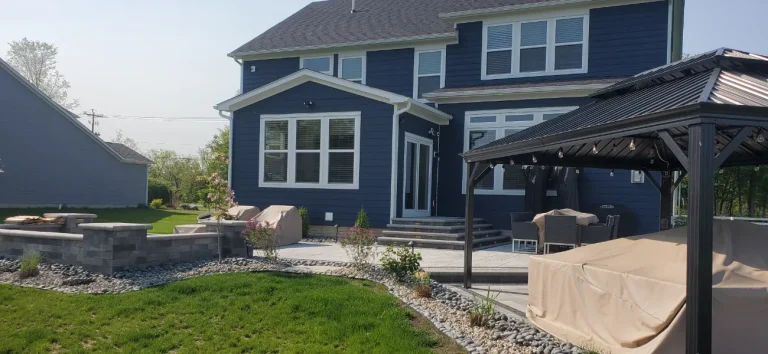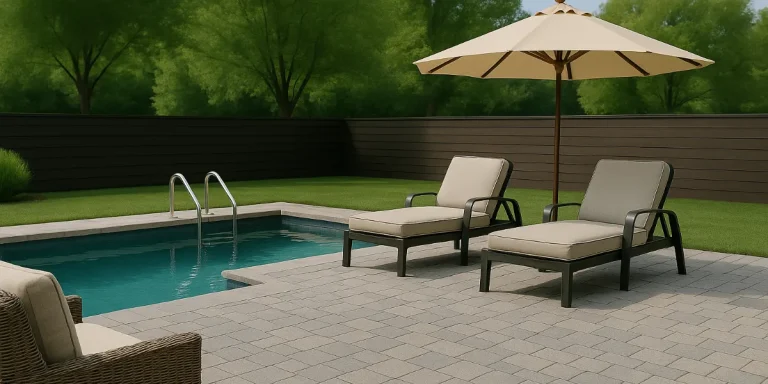When to Replace Your Old Retaining Wall
Retaining Walls are more than just a visual feature in your yard—they’re essential for preventing erosion, managing slopes, and protecting structures from water damage. But like any outdoor structure, they don’t last forever. Over time, even the most well-built retaining walls can begin to fail, especially if they weren’t installed properly or have been exposed to harsh weather and poor drainage.
If you’re unsure whether your retaining wall needs repairs or full replacement, this guide will help you understand the signs of structural failure and how Double A Ohio can help restore safety and beauty to your landscape.
Signs It’s Time to Replace Your Retaining Wall
A retaining wall is meant to be a long-lasting solution for managing slopes, controlling erosion, and protecting your landscape—but like any structure, it has a lifespan. While some minor leaning or hairline cracks can be fixed with targeted retaining wall repairs, there comes a point where a full replacement is the smarter and safer investment.
Here are five clear indicators that your wall may be at the end of its functional life:
1. Significant Leaning or Bowing
If your wall is noticeably tilting forward, backward, or bulging outward, it’s likely under too much pressure from the soil and water it was meant to hold back. This pressure can come from:
-
-
- Improper drainage behind the wall
- Expanding clay soils or freeze-thaw cycles
- Lack of reinforcement during construction
-
Once a wall leans more than a couple of inches—or the lean continues to worsen—it’s no longer structurally sound. This is especially true for taller retaining walls. At this stage, patching or bracing will only delay an inevitable failure. Rebuilding with proper base preparation, drainage, and geogrid reinforcement is typically the only safe long-term fix.
2. Cracking or Material Separation
Cracks are common in concrete and masonry, but not all cracks are harmless. Large vertical or horizontal cracks, stair-step patterns, or gaps between individual blocks or timbers are signs that the wall is shifting or settling unevenly. These structural separations:
-
-
- Allow water to penetrate and freeze inside the wall
- Compromise the load-bearing integrity of the structure
- Often grow worse over time without intervention
-
If your wall shows widespread cracking or separation, it’s time to talk to Double A Ohio about a full replacement using durable, long-lasting materials such as segmental block, natural stone, or boulder retaining walls.
3. Rotting, Rusting, or Surface Decay
Wooden retaining walls can begin to rot after years of exposure to moisture—especially if they weren’t pressure-treated properly or were installed without drainage systems. Signs include:
-
-
- Soft or crumbling boards
- Insect infestations (like termites or carpenter ants)
- Discoloration or surface mold
-
Even concrete or block walls can suffer from surface degradation, known as spalling, where the outer layer flakes off due to moisture penetration. If decay is visible throughout the wall or impacting its structure, rebuilding is the safest option.
4. Soil Erosion or Water Washout
Your retaining wall isn’t working if it’s allowing soil to wash out from behind or underneath it. This is often a sign of poor drainage design or a failed weep hole system. You might notice:
-
-
- Gaps at the bottom of the wall
- Pooled water or muddy areas nearby
- Slopes that are becoming unstable
-
Without intervention, this can lead to further soil movement, landscaping damage, and even water runoff toward your home. In these cases, grading and drainage improvements are just as important as rebuilding the wall itself.
5. Repeated Repairs That Don’t Last
If you’ve tried multiple repairs—replacing blocks, bracing the structure, re-leveling sections—but the same issues keep coming back, the root cause hasn’t been fixed. Often, this means:
-
-
- The original wall was built without enough support
- The base wasn’t compacted correctly
- Drainage is still failing behind the wall
-
Rather than continuing to invest in temporary fixes, a full retaining wall replacement gives you a fresh start with better engineering, proper materials, and built-in drainage that ensures long-term performance.
What to Expect From a Retaining Wall Replacement
When you choose Double A Ohio for your retaining wall replacement, you’re not just getting a new wall—you’re investing in a long-term solution designed for strength, stability, and seamless integration with your property. We don’t take shortcuts. Every project is handled with precision, from start to finish.
1. Excavation and Base Preparation
Every great wall starts with a solid foundation. We excavate the area to the appropriate depth and install a compacted gravel base to support the weight of the wall and prevent future settling or shifting. A poor base is one of the most common reasons walls fail—so we never overlook this critical step.
2. Integrated Drainage Systems
Proper drainage is non-negotiable for a long-lasting retaining wall. We install:
-
-
- French drains to redirect water behind the wall
- Perforated pipes with fabric wrapping to prevent clogs
- Weep holes to relieve pressure buildup behind the wall
-
This helps manage hydrostatic pressure and protects the wall from damage caused by trapped water—especially important during Ohio’s freeze-thaw cycles.
3. Durable, High-Quality Materials
We offer a variety of retaining wall materials to match your property’s style and structural needs, including:
-
-
- Segmental concrete blocks for clean lines and modular strength
- Natural stone for a timeless, organic look
- Large boulders for rustic appeal and maximum stability
-
All materials are chosen for their durability, appearance, and ability to withstand Ohio’s varied weather conditions.
4. Structural Reinforcement
For walls over 3–4 feet tall, we incorporate geogrid reinforcement, which is a mesh-like material that ties back into the retained soil. This reinforcement increases the wall’s strength dramatically and helps it resist leaning or collapse over time.
5. Smart Grading and Erosion Control
We don’t just build the wall—we shape the surrounding landscape to work with it. Our team uses grading techniques to slope the soil away from the wall and install swales or downspout drains to keep water moving in the right direction. This prevents erosion and reduces future maintenance needs.
6. Seamless Design Integration
Your retaining wall shouldn’t look like an afterthought. We design with your entire outdoor space in mind. Whether you're planning a paver patio, stone walkway, or new landscape installation, we’ll make sure everything fits together beautifully. Our hardscaping and landscape design services allow us to create a cohesive and functional yard—not just a fixed wall.
Real-World Example: From Leaning Wall to Long-Term Fix
A recent client in Delaware, Ohio had a timber retaining wall that was severely leaning and beginning to rot. We replaced it with a modern block system complete with drainage pipe and backfill stone. The new wall not only resolved their water issues but also improved the look and resale value of their home.
Service Areas We Proudly Serve
Double A Ohio provides expert retaining wall construction and replacement throughout Central Ohio, including:
-
- Marengo
- Sunbury
- Galena
- Johnstown
- Mount Gilead
- Delaware
- And surrounding towns in Knox, Delaware, and Morrow Counties
Ready for a Safer, Stronger Retaining Wall?
Contact Double A Ohio today to schedule your retaining wall inspection or request a replacement estimate. We’ll assess the damage, walk you through your options, and deliver a solution that protects your property and enhances your landscape.
Whether you need grading, drainage, or a full landscape renovation, our team is here to help—serving Marengo and surrounding Central Ohio communities with pride.

